Human resources departments are essential to any company. They guide the office culture and employees on how they should conduct themselves – even the bosses. The blog Retronaut uncovered old supervisor manual, created by RCA in the 1940s meant to educate male bosses on how to integrate their new female co-workers into the workplace. World War II ignited a greater need for women to join the workforce, especially in factories. The manual titled ‘When You Supervise A Woman’ gives a window into how these working women in the 1940s were treated – and it may surprise you.
Women are teachable
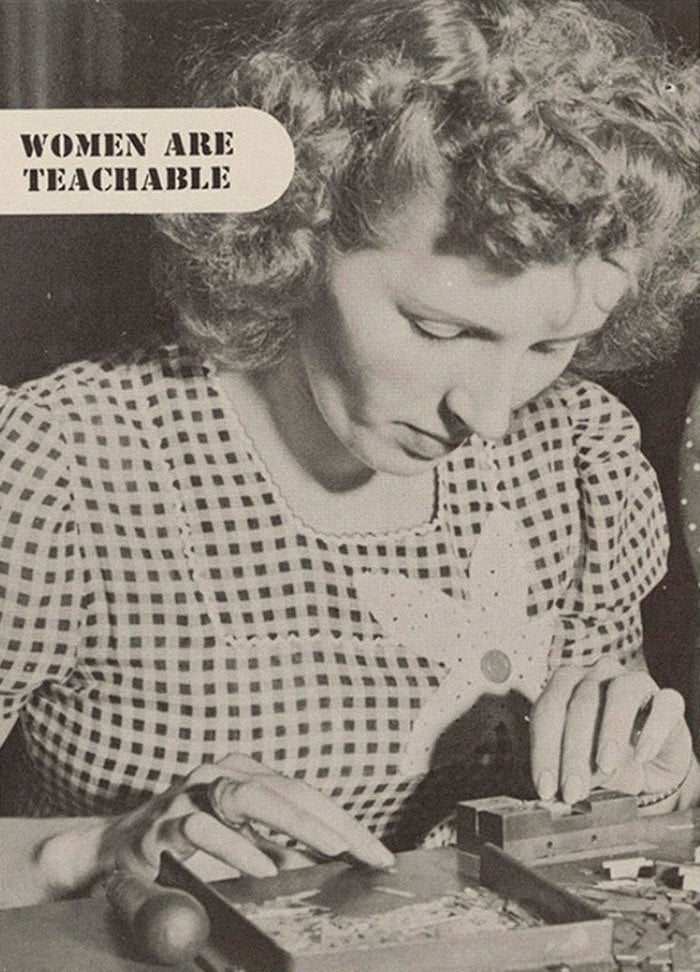
The #MeToo and #TimesUp movements forced a wave of change across industries, highlighting sexist practices and workplace sexual harassment that have been rampant for decades. Men have questioned how they will be able to ‘adjust’ to this new culture, of well, common decency. Maybe they can take a page from the past on how to treat your female subordinates. While the language of the manual is misogynistic some of these points are actually how any employee male or female should hope to be treated.
When you supervise a women
- Make clear her part in the process or the product on which she works.
- Allow for her lack of familiarity with machine processes.
- See that her working set-up is comfortable, safe & convenient.
- Start her right by kindly & careful supervision.
- Avoid horse or “kidding”; she may resent it.
- Suggest rather than reprimand.
- When she does a good job, tell her so.
- Listen to and aid her in her work problems.
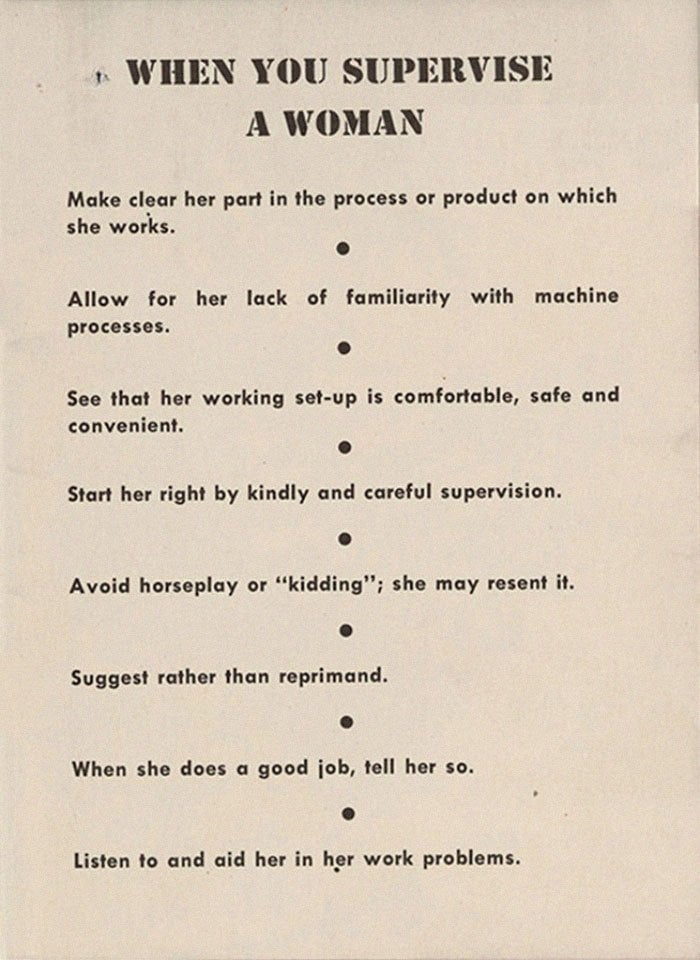
The 1940s saw a new kind of working woman. While women contributing to the workforce was not new, especially for minorities or lower-class women, for white-middle to high-class women there had always been a divide. Gender roles were not the only reason people balked at the idea of women working. The Depression caused such a high level of unemployment that women working was seen as stealing jobs from men.
Women are patient
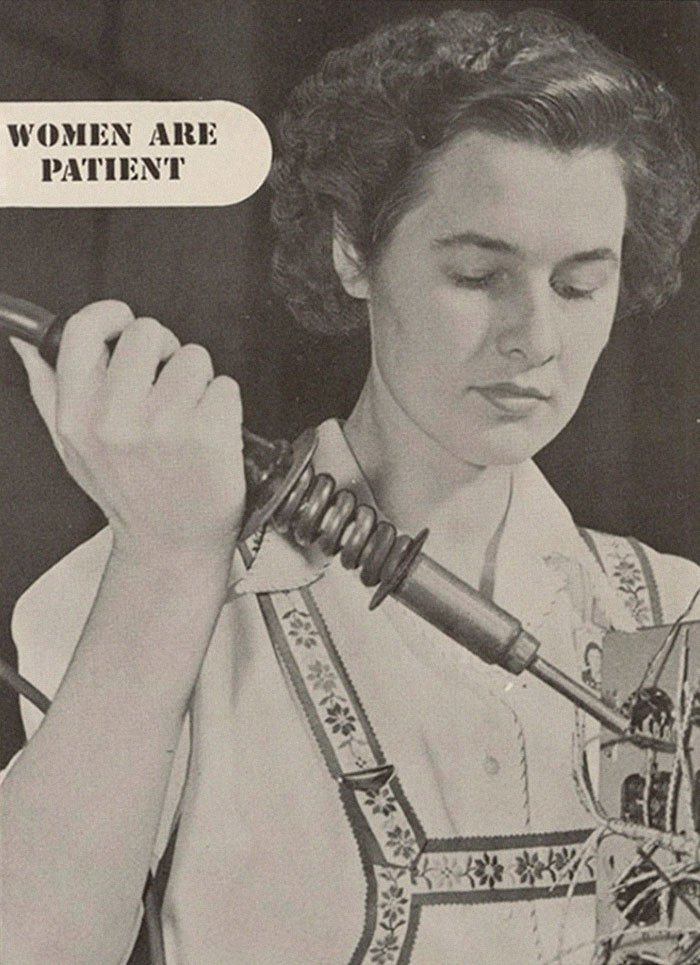
World War II changed everything. Even before the United States joined the fight, the government had signed contracts to provide war equipment for the Allies. The war industry caused a job boom and positions needed to be filled by every able-bodied citizen – including women – but just as a temporary solution.
When you put a women to work
- Have a job breakdown for her job.
- Consider her education, work experience and temperament in assigning her to that job.
- Have a necessary equipment, tools and supplies ready for her.
- Try out her capacity for and familiarity with the work.
- Assign her to a shift in accordance with health, home obligations and transparent arrangements.
- Place her in group of workers with similar background and interests.
- Inform her fully on the health & safety rules, company policies and company objectives.
- Be sure she knows the location of the rest-rooms, lunch facilities, dispensaries.
- Don’t change her shift too often and never without notice.
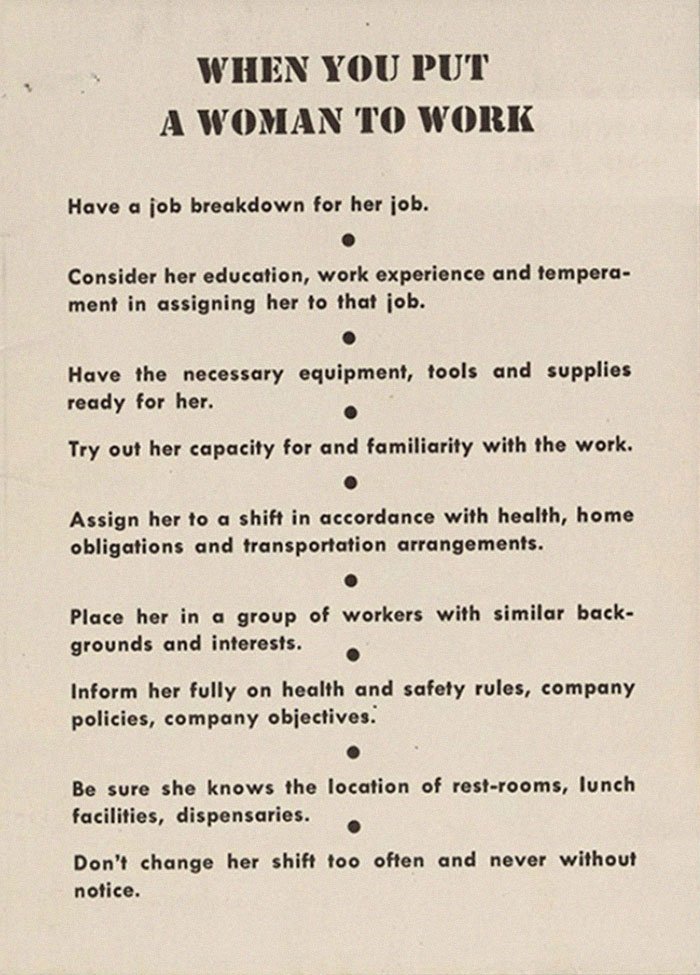
To encourage women to join the call to work they rolled out a propaganda campaign starring “Rosie the Riveter,” who spread the slogan “we can do it” to women across the nation. Slowly but surely they answered the call in a wave. Lower class women that were already working switched to higher-paying factory jobs, then those just graduating from high school and then eventually even married woman were targeted.
Women are careful
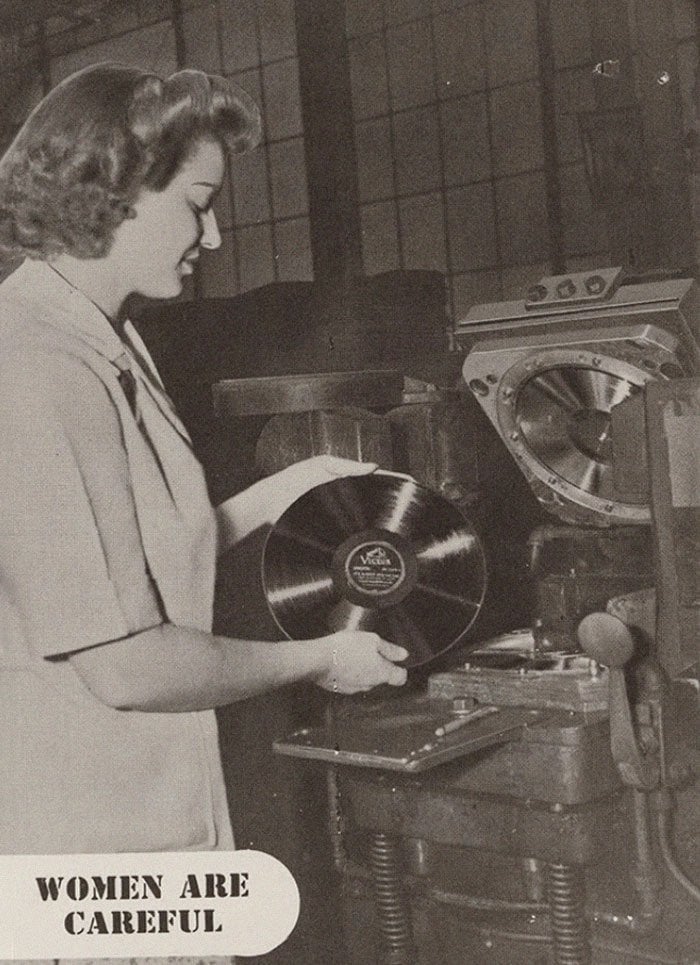
While some men didn’t want their wives working, the demand for workers became so high that even women with young children joined the working ranks. When the United States first entered World War II there were 12 million women already working and 18 million (one-third of the workforce) by the time it ended.
Whenever you employ a women
- Limit her hours to 8 a day, and 40 a week, if possible.
- Arrange brief rest periods in the middle of each shift.
- Try to make nourishing food available for the lunch periods.
- Try to provide a clean place to eat lunch, away from her workplace. Make pure & cool drinking water accessible.
- See that toilet and rest-rooms are clean & adequate.
- Watch work hazards – moving machinery; dust & fumes; improper lifting; careless housekeeping.
- Provide properly adjusted work seats; good ventilation and lighting.
- Recommend proper clothing for each job; safe, comfortable shoes; try to provide lockers and a place to change to work cloths.
- Relieve a monotonous job with the rest periods. If possible, use music during fatigue periods.
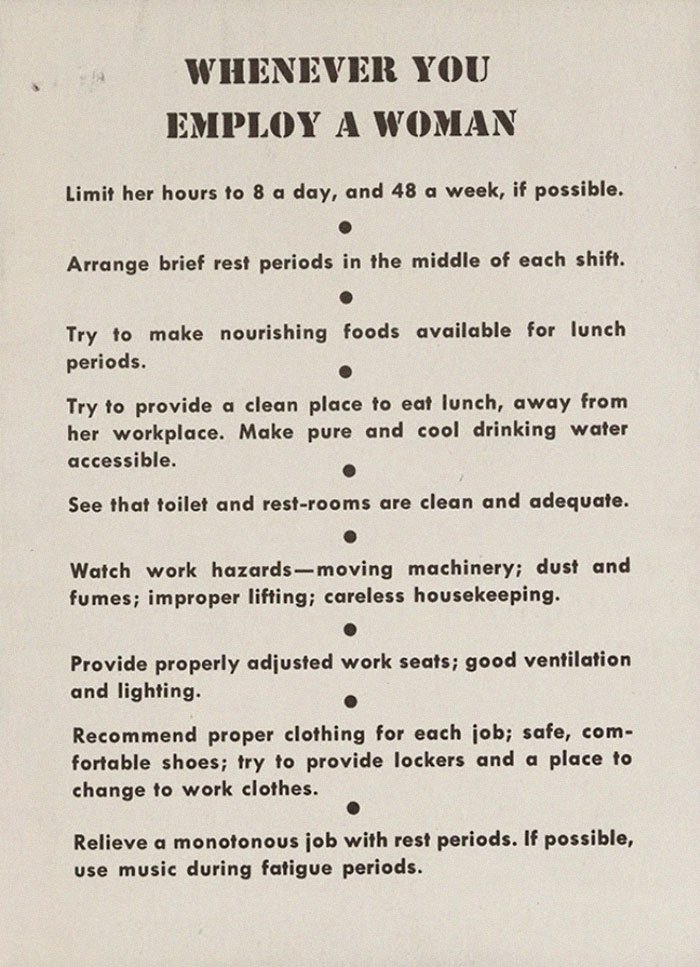
Even with the war efforts, most women worked in traditionally “female jobs” such as positions in the service sector. The only work sector that saw a complete mixing of genders was in factories.
Women are co-operative
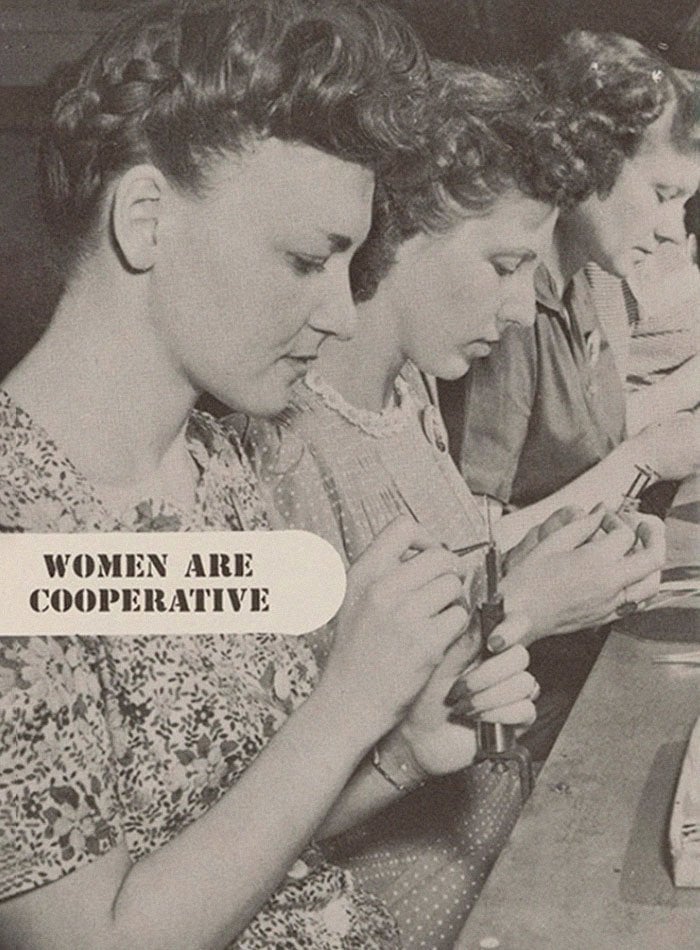
The working women of the war were a crucial part of the efforts, but it still did not change societies view of a woman’s role. Factory or service jobs were seen as acceptable temporary contributions, but after the war, it was made clear to women that they were to return back to the home. Jobs demoted women into lower-paying jobs, while others laid them off completely. Rosie the Riveter faded into the background and the 1950s homemaker took her place.
Finally – Call on a trained women counselor in your personal department
- To find out what women workers think and want.
- To discover personal causes of poor work, absenteeism, turnover.
- To assist women workers in solving personal difficulties.
- To interpret women’s attitude and actions.
- To assist in adjusting women to their jobs.
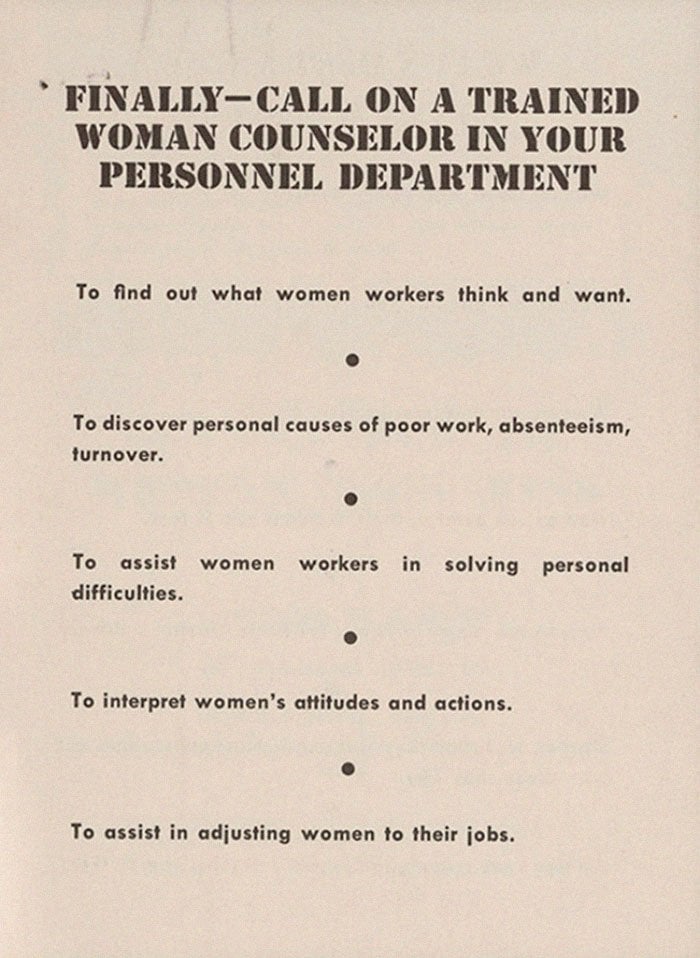
Like what you’re reading? Spread this knowledge with network by sharing it :)
